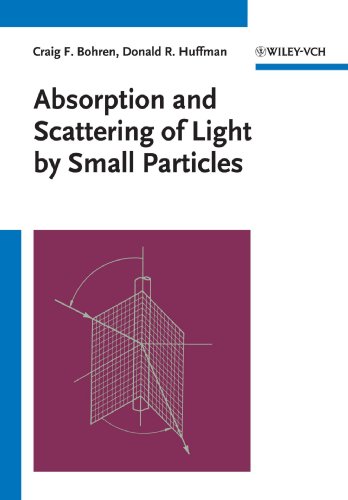Absorption and scattering of light by small particles ebook download
Par tabor abdul le dimanche, juin 26 2016, 05:53 - Lien permanent
Absorption and scattering of light by small particles by Craig F. Bohren, Donald R. Huffman


Absorption and scattering of light by small particles Craig F. Bohren, Donald R. Huffman ebook
Page: 533
Format: djvu
Publisher: John Wiley & Sons
ISBN: 047105772X, 9780471057727
"Mie solutions" (infinite series) to scattering, absorption and phase function of electromagnetic waves by a homogeneous sphere. An atmosphere filled with dust will appear reddish because the scattering and absorption of the shorter wavelengths would only leave the red in the direct and scattered beams. μm particles; B: 0.05 μm particles). Light rays may also be absorbed by the atoms, molecules, and dusts Some mountainous regions are famous for their blue haze. Pollution particles increase the effect by scattering or absorbing more blue light than red light. Davis and colleagues have compared the scatter data for compact astrophysical sources with both a traditional bell-shaped “Gaussian” distribution and a distribution that accounts for axion–photon conversion. Ultrafine particle size in RPMI medium was further analyzed by dynamic light scattering. The size distributions from three individual measurements show that the majority of ultrafine particles in RPMI medium are present as single particles or small agglomerates of two to three particles. Waves, plasmons, near-field scattering. Small particles in the atmosphere scattering light cause both sunsets and sunrises to be red. Even though Mie theory offers convenient and fast way of solving light scattering problem by homogeneous spherical particles, there are other techniques, such as discrete dipole approximation, FDTD, T -matrix, which can also be used for such tasks. Aerosols of terpenes from the vegetation react with ozone in the atmosphere to form small particles about 200 nm across, and these particles scatter the blue light. Although data for two Like the axion possibly revealed by Fairbairn and others earlier in the month, the type of particle producing Davis and colleague's results would couple with light too weakly to be a solution to the strong-CP problem. The amount of IL-8 was determined by comparing the absorbance of the samples with standard recombinant human IL-8.